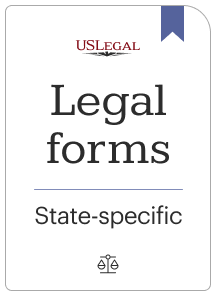

This form is a sample letter in Word format covering the subject matter of the title of the form. A Letter for Fee Structure is a document that outlines the details of the fees or charges associated with a specific product, service, or educational institution. It serves as a formal communication between the provider and the recipient, clearly stipulating the financial obligations involved. The primary purpose of a Letter for Fee Structure is to inform the recipient about the costs involved, ensuring transparency and avoiding any miscommunication or misunderstandings. This letter is commonly used in various scenarios such as educational institutes, professional services, training programs, subscription-based services, and more. Some relevant keywords associated with a Letter for Fee Structure include: 1. Fee structure: This refers to the comprehensive breakdown of fees or costs involved in a specific service, product, or education program. It may encompass tuition fees, service charges, registration fees, installment plans, or any other relevant expenses. 2. Educational fee structure: This specifies the fees relevant to educational institutions such as schools, colleges, universities, or training programs. It typically includes tuition fees, examination fees, library fees, laboratory fees, and any other mandatory charges. 3. Service fee structure: This refers to the fees associated with professional services, such as legal consultations, medical treatments, architectural services, consultancy services, or any other service rendered. It may outline hourly rates, package rates, contingency fees, or any other applicable charges. 4. Subscription fee structure: This describes the fees associated with subscription-based services like online platforms, memberships, newspapers, magazines, software licenses, or any other recurring subscription expenses. It often includes monthly or annual subscription charges, early termination penalties, add-on fees, or upgrade costs. 5. Payment terms and conditions: This section highlights the preferred payment methods, due dates, late payment penalties, refund policies, and any other payment-related instructions or conditions that the recipient needs to be aware of. 6. Financial assistance or scholarships: In some cases, a Letter for Fee Structure may also include information about available financial aid options, scholarships, grants, or discounts to assist recipients in managing their financial obligations. 7. Terms and conditions: This section outlines any additional terms and conditions related to the fee structure, including provisions for changes in fees, method of communication for fee-related matters, and any other relevant clauses. In summary, a Letter for Fee Structure serves as a crucial document to establish clear communication and understanding between the provider and the recipient regarding the financial obligations involved. Whether it's an educational fee structure, service fee structure, or subscription fee structure, this letter ensures transparency and avoids any potential disputes or confusion.
A Letter for Fee Structure is a document that outlines the details of the fees or charges associated with a specific product, service, or educational institution. It serves as a formal communication between the provider and the recipient, clearly stipulating the financial obligations involved. The primary purpose of a Letter for Fee Structure is to inform the recipient about the costs involved, ensuring transparency and avoiding any miscommunication or misunderstandings. This letter is commonly used in various scenarios such as educational institutes, professional services, training programs, subscription-based services, and more. Some relevant keywords associated with a Letter for Fee Structure include: 1. Fee structure: This refers to the comprehensive breakdown of fees or costs involved in a specific service, product, or education program. It may encompass tuition fees, service charges, registration fees, installment plans, or any other relevant expenses. 2. Educational fee structure: This specifies the fees relevant to educational institutions such as schools, colleges, universities, or training programs. It typically includes tuition fees, examination fees, library fees, laboratory fees, and any other mandatory charges. 3. Service fee structure: This refers to the fees associated with professional services, such as legal consultations, medical treatments, architectural services, consultancy services, or any other service rendered. It may outline hourly rates, package rates, contingency fees, or any other applicable charges. 4. Subscription fee structure: This describes the fees associated with subscription-based services like online platforms, memberships, newspapers, magazines, software licenses, or any other recurring subscription expenses. It often includes monthly or annual subscription charges, early termination penalties, add-on fees, or upgrade costs. 5. Payment terms and conditions: This section highlights the preferred payment methods, due dates, late payment penalties, refund policies, and any other payment-related instructions or conditions that the recipient needs to be aware of. 6. Financial assistance or scholarships: In some cases, a Letter for Fee Structure may also include information about available financial aid options, scholarships, grants, or discounts to assist recipients in managing their financial obligations. 7. Terms and conditions: This section outlines any additional terms and conditions related to the fee structure, including provisions for changes in fees, method of communication for fee-related matters, and any other relevant clauses. In summary, a Letter for Fee Structure serves as a crucial document to establish clear communication and understanding between the provider and the recipient regarding the financial obligations involved. Whether it's an educational fee structure, service fee structure, or subscription fee structure, this letter ensures transparency and avoids any potential disputes or confusion.
You can re-gain access to your documents from the My Forms tab at any time. If you’re an existing client, you can simply log in, and find and download the template from the same tab.
No matter the purpose of your documents-be it financial and legal, or personal-our platform has you covered. Try US Legal Forms now!